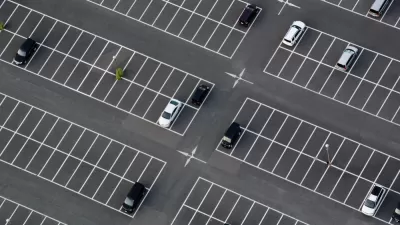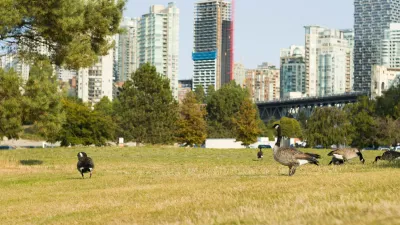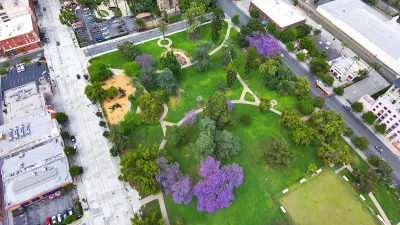The promoters of a new park hope to provide a model for how replacing surface parking lots with green space can mitigate urban heat and boost urban biodiversity.

Writing in Greater Greater Washington, Wyatt Gordon describes plans for a new park in one of Richmond, Virginia’s most park-poor areas. “By converting a 381 space surface parking lot into a new public park, the Science Museum of Virginia hopes to show folks that the city can rebuild a more comfortable and climate resilient future for its main boulevard if only we’re willing to depave it.”
With only 7 percent of city land used for parks and green space, Richmond has less equitable access to green space than most U.S. cities, according to the Trust for Public Land. As Gordon points out, “A closer look reveals that the issue may be worse than the data shows as parcels counted as greenspace include cemeteries, road medians, and schoolyards that may not actually allow for safe or public access.”
Dr. Jeremy Hoffman, chief scientist at the Science Museum, plans to monitor changes in air and surface temperatures as the project moves forward. “The long-term hope is that other property owners and state institutions in the area with large surface lots may see the value of depaving and similarly shift their parking underground, stack it in a deck, or get rid of it altogether as Broad Street transitions to a more transit-oriented area.”
FULL STORY: From parking to a park: can one Richmond surface lot prove the value of depaving?

Maui's Vacation Rental Debate Turns Ugly
Verbal attacks, misinformation campaigns and fistfights plague a high-stakes debate to convert thousands of vacation rentals into long-term housing.

Planetizen Federal Action Tracker
A weekly monitor of how Trump’s orders and actions are impacting planners and planning in America.

San Francisco Suspends Traffic Calming Amidst Record Deaths
Citing “a challenging fiscal landscape,” the city will cease the program on the heels of 42 traffic deaths, including 24 pedestrians.

Defunct Pittsburgh Power Plant to Become Residential Tower
A decommissioned steam heat plant will be redeveloped into almost 100 affordable housing units.

Trump Prompts Restructuring of Transportation Research Board in “Unprecedented Overreach”
The TRB has eliminated more than half of its committees including those focused on climate, equity, and cities.

Amtrak Rolls Out New Orleans to Alabama “Mardi Gras” Train
The new service will operate morning and evening departures between Mobile and New Orleans.
Urban Design for Planners 1: Software Tools
This six-course series explores essential urban design concepts using open source software and equips planners with the tools they need to participate fully in the urban design process.
Planning for Universal Design
Learn the tools for implementing Universal Design in planning regulations.
Heyer Gruel & Associates PA
JM Goldson LLC
Custer County Colorado
City of Camden Redevelopment Agency
City of Astoria
Transportation Research & Education Center (TREC) at Portland State University
Jefferson Parish Government
Camden Redevelopment Agency
City of Claremont





























